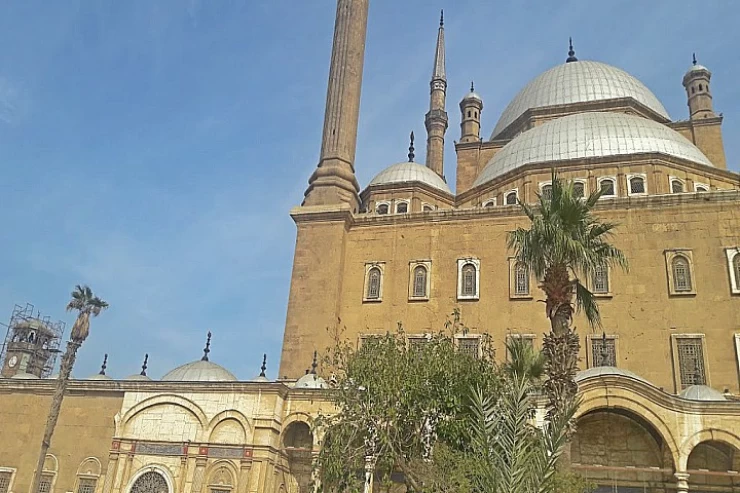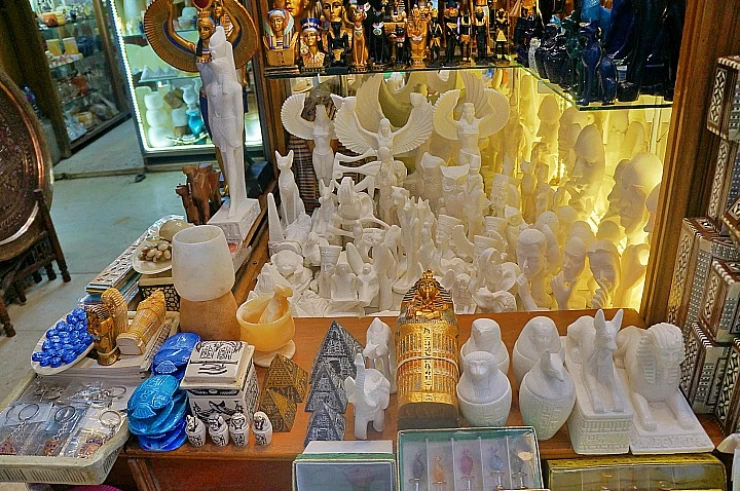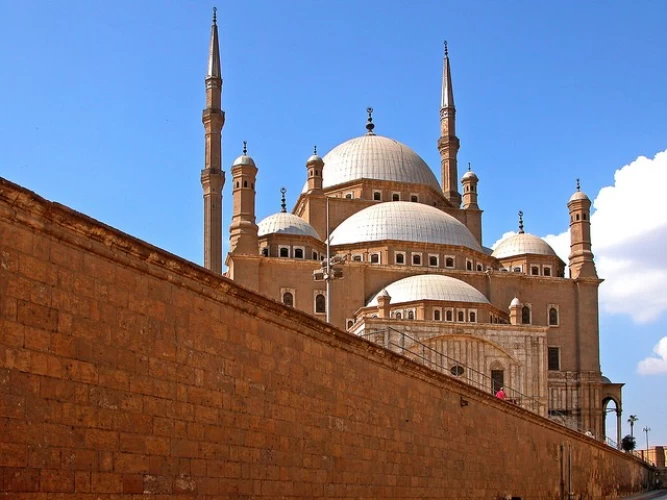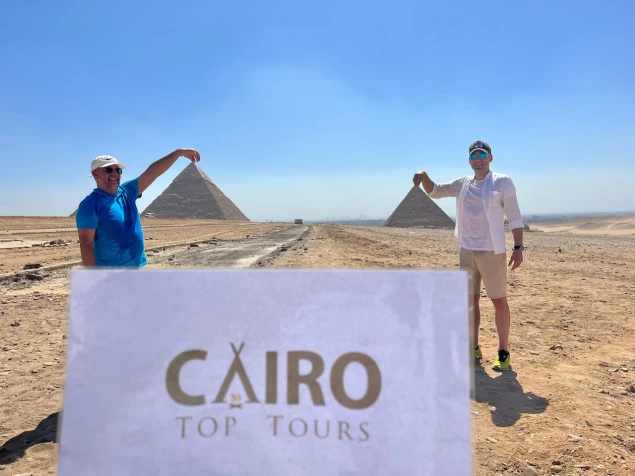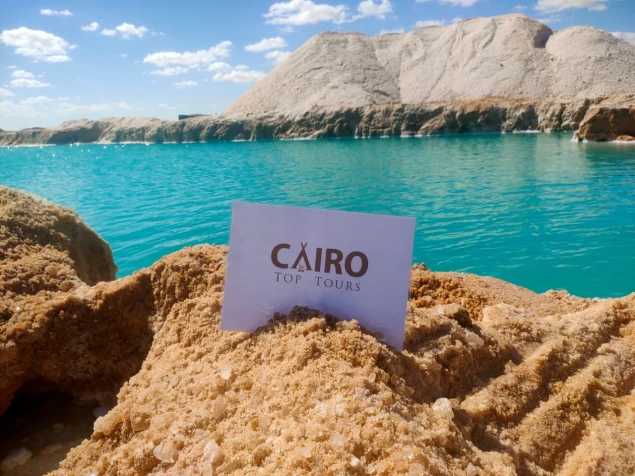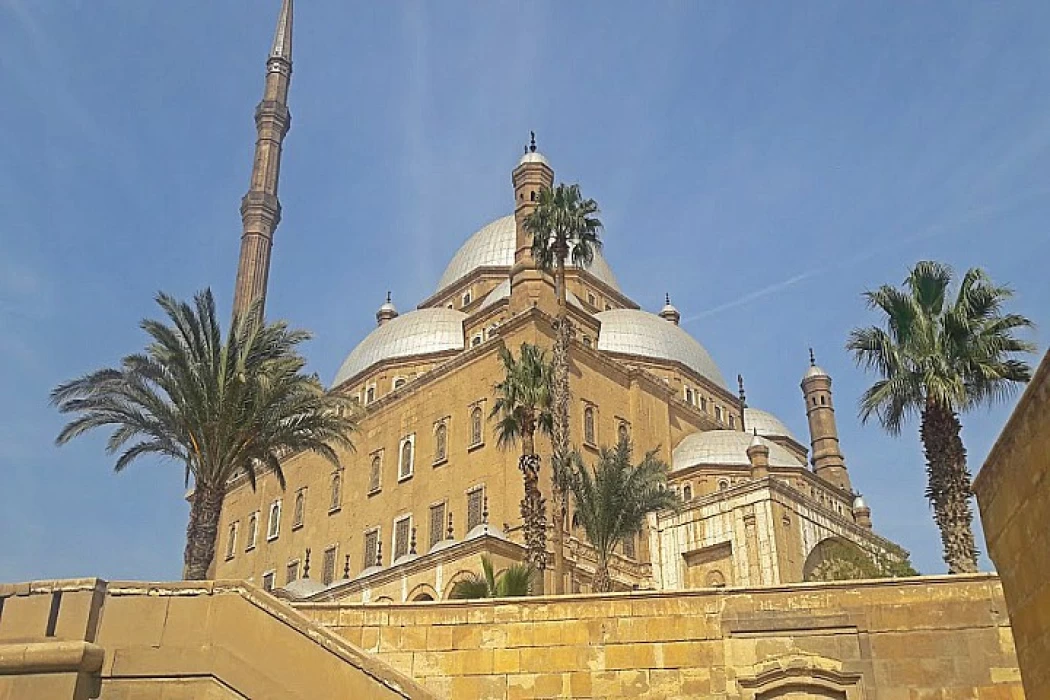
The Citadel of Salah al-Din
Salah al-Din Citadel
Salah al-Din began constructing a citadel on the top of Mount Muqattam, but he died before he could complete it and was succeeded by Sultan al-Kamil ibn Adel; this sultan was the first to live in Salah al-Din's citadel, naming it in honour of the man who built it.
In the west of the citadel, there is a listed door with an Arabic word above it stating that our king Al-Nasser Salah al-Din al-Ayyubi ordered the construction of this citadel in 579.
Saladin dug a well for the soldiers to drink during times of war, as the period of Saladin was an important period in Islamic history, as he was able to unite and conquer many countries.
This citadel is considered an important defensive centre for Cairo and Fustat, two of the most important ruling centres in Egypt. It is also considered a fortress where, if the state falls into the hands of an enemy, he can hide, as it is located high above the mountain. It is considered one of the most important castles that were built in the Middle Ages, especially in the Islamic era.
This citadel passed through many historical events, including in the eras after Salah al-Din when Muhammad Ali ruled Egypt and his successors, then the French expedition until the present time, as it is now considered one of the most important places where people from all over the world visit to see the great citadel on Mokattam Mountain.
The construction of this citadel was supervised by Salah al-Din's minister, who is called Baha al-Din Qaraqosh, and after him, others came to complete the construction of the citadel and built a huge door in the era of the Ottoman Sultan Muhammad Yakan Pasha, where it was established in 1200 AH/1785 AD, and a memorial plaque was written on the door in Turkish with the name Muhammad Yakan Pasha, who built the door, but it was stolen after that, and they called this door many names, including Bab al-Mokattam in the Ottoman era or Bab Salah Salem in our time.
The internal door of the citadel is called the Citadel Tower door or the museum door, as it separates the citadel and the old military city, which was well fortified to face enemies.
The northeastern part of the citadel is the fortress, which was the most important place of the citadel in the Middle Ages. The thickness of citadel walls is 3 m thick and 10 m high, and these walls were built on the same pattern as the walls in the Fatimid era, in addition to containing new elements such as making the walls round and similar to Saladin's castle to Karak Castle in Jordan, as both were completed by Al-Kamil bin Adel.
Who is Saladin?
Salahuddin was born in Iraq to a Kurdish father, but when he was young, he moved to Damascus with his father, as he was the governor of Damascus. Salahuddin spent most of his life there and studied engineering and science with literature and poetry and also learned horseback riding and excelled in it.
When Saladin grew up, the Abbasid state was divided, as Egypt was ruled by the Fatimids and most of the Mediterranean countries were under Crusader control, but Damascus was under the rule of Nur al-Din, Saladin's uncle, as Shawar bin Mujir came to him out of fear of the minister of Egypt, Dirgham bin Amer, to save them, but Saladin refused to go with them, so his brother Asaduddin went to Egypt, and the Ayyubids entered Egypt in 1163 AD. The Ayyubids entered Egypt in 1163 AD, but after that, Asad al-Din decided to withdraw from Egypt after the Crusaders attacked him due to the lack of soldiers with him, but then they returned with Salah al-Din to defeat the Franks and the Fatimids from the Ayyubid army, and there was a battle between them in Giza where the difficulty of the land made them victorious, and Salah al-Din was able to capture one of their leaders, and then another battle took place in Alexandria. Then after that, the Ayyubids returned to Egypt and settled in it, but Saladin's cousin appealed to him in Damascus to free him from the Crusaders. After that, Saladin continued to conquer one country after another, such as Tripoli, Lebanon, and others, until he became the ruler of Egypt and continued to build in Egypt, the most important of which was the castle on the mountain, but he died before realizing his dream. He died before he realized his dream, which was to free Jerusalem from enemies, as he tried to fight the Crusaders, but he returned to Egypt without victory. After that, he entered into some wars with King Richard I of England until Saladin fell ill with a fever and stayed for ten days. Saladin died, leaving behind a great history and a building that is one of the most important tourist attractions in Egypt at present.
The idea of building the citadel arose to be the center of ruling Egypt; the citadel witnessed various events through centuries for being the headquarters of the rulers. The citadel is one of the most prominent sights in Islamic Cairo. It witnessed the formation of one of the most powerful armies in the Middle Ages. According to the future vision of Saladin, the citadel will be the centerpiece and the heart of the Egyptian government.
He was ambitious about forming a belt of walls surrounding Cairo and El Fustat to be a massive military territory. Secondly, Saladin was thinking about protecting the city from any potential foreign attack due to the advantage of being at one of the highest points in Cairo. One of the top activities in Cairo during the Egypt Christmas tours is visiting the Saladin Citadel, which offers you a panoramic view of the huge city of Cairo.
The strategic reality of the Saladin Citadel's location on the Mokattam Hills served as an advantage, which provided a favorable view of Cairo and facilitated the watch of any army coming nearer. The place was also picked for an important reason; it was quiet, standing somewhere high, hard for enemies to reach, as well as able to see all the easy directions for entering the area. Saladin constructed the citadel with the hope that it alone did not exist in a vacuum but rather formed part of a bigger defense system, which comprised walls around the city of Cairo and the city of Fustat.
The terraces of Saladin Citadel allow enjoying a bird's-eye viewpoint of Cairo. The citadel complex is also able to take one on a journey as the legacies of different rulers who shaped the architecture and design of the citadel are explored by any visitor. The citadel is also preferred by tourists, where they can fully understand history and architecture related to Islamic art. In addition to that, tourists enjoy visiting the citadel on a day tour to Cairo or on an Egypt Christmas tour, which is usually combined with visits to other historic places in Islamic Cairo. Saladin Citadel is, as much as it is a segment of Egypt’s military and political past, an art piece that has incorporated the vibrant aspects of Islamic art. This ensures that it is always on the tourist’s itinerary since the history of Egypt is long and thick.
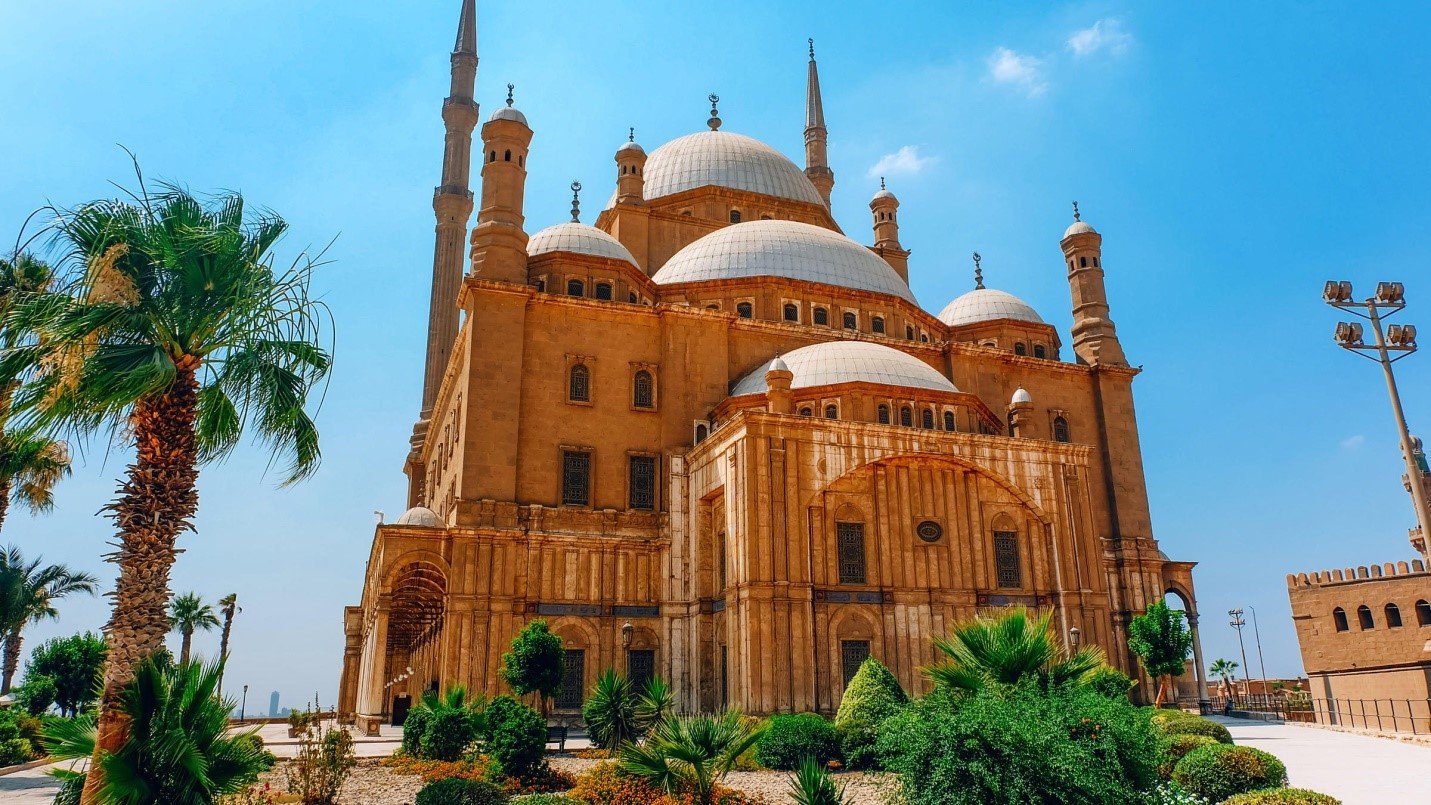
Salah Al-Din Al-Ayyubi Castle contains 4 mosques; they are Muhammad Ali Mosque, Madrasa of Al-Nasir Qalawun, and Mosque of Sulaiman Pasha Al-Khadi. The visit to the citadel will allow you to live a new experience with the art of Islamic architecture. The castle includes a military museum, a vehicle museum, and the Garden Museum, which makes the tour to the citadel one of the best tours besides Nile cruise tours because of the unique artifacts and the pieces of art.

The castle encompasses four gates, one of the gates known as “the gate of the mountain” for being on the hills of El Mokkatam mountain. This door holds the name of Yakon Pasha in the Turkish language and the date of the construction of 1785. You can imagine the art of the interior castle that witnessed many ages and rulers from different backgrounds and the artistic pieces and decorations included.
Muhammed Ali Pasha constructed another door in 1827 to be used as a new gate for the place instead of the door that was constructed by Saladin Al Ayuubi in 1183. The new door has also a leading, paved, sloping path to make reaching the castle easier. Recently, the new door or gate of the citadel is known as New Gate Street or the quarry railway.
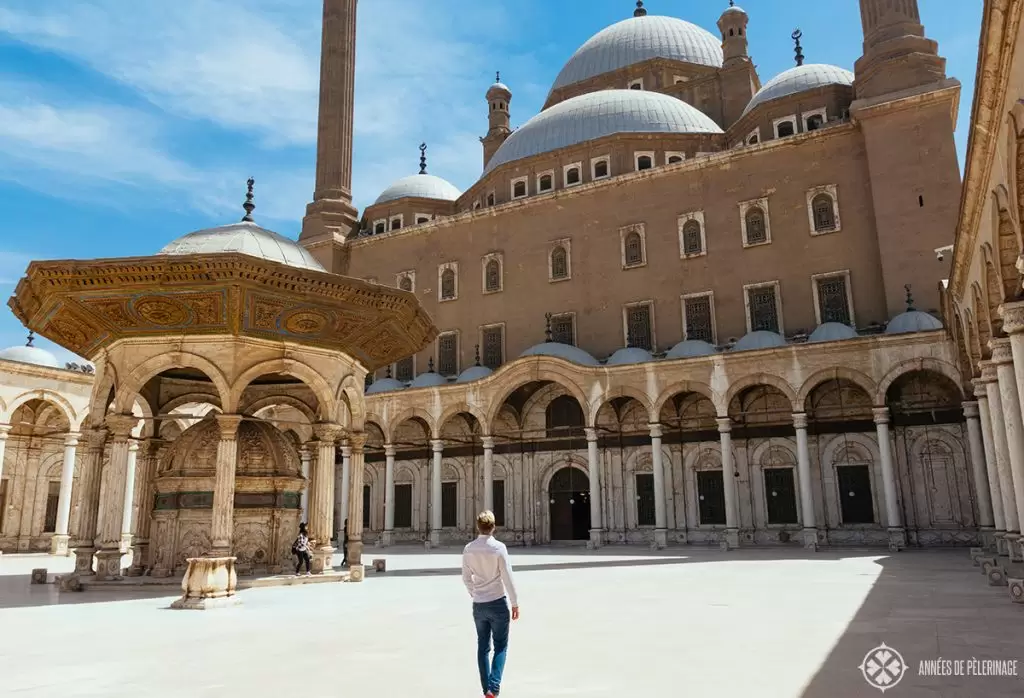
This is one of the most popular sights in Egypt and is located inside the citadel of Saladin in Cairo. The mosque also has another name, "Alabaster Mosque." This is due to the paneling of the mosque with the precious stones of marble, starting from the interior design to the walls. One of the reasons behind making Muhammed Ali’s Mosque is one of the best mosques to see during your Egypt Luxury Tour to see the art of Islamic architecture. The mosque also has a unique advantage with its two minarets that reach the highest point of 84 meters. Visiting the Mosque and the Castle is one of the most attractive for tourists from around the world and even coming from different ports in Egypt, like excursions from Sokhna Port, to enjoy spending time and filling their souls with beauty.

Al Gawhara Palace, also known as the "Jewel Palace," is a historic site located within the Citadel of Cairo, Egypt. Here are some key points about this remarkable structure. Visiting Al Gawhara Palace provides a glimpse into Egypt's past and allows for an appreciation of the artistic and architectural heritage of the Mamluk era.
Al Gawhara Palace was built during the reign of Sultan Al-Ghuri in the early 16th century (around 1503-1517). It served as a royal residence and an important center for governance. The palace showcases a blend of Islamic and Mamluk architectural styles, characterized by intricate decorative elements, beautiful arches, and ornate details.








